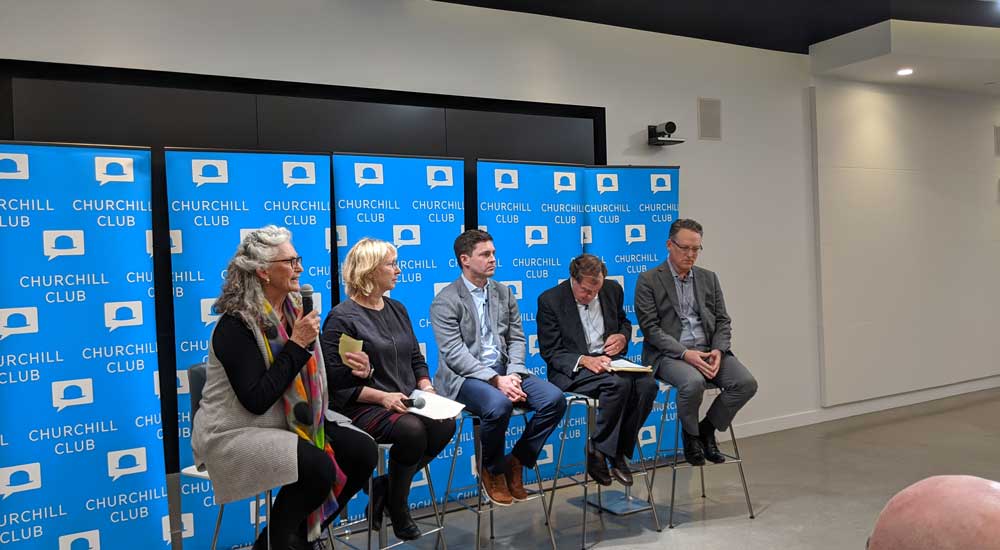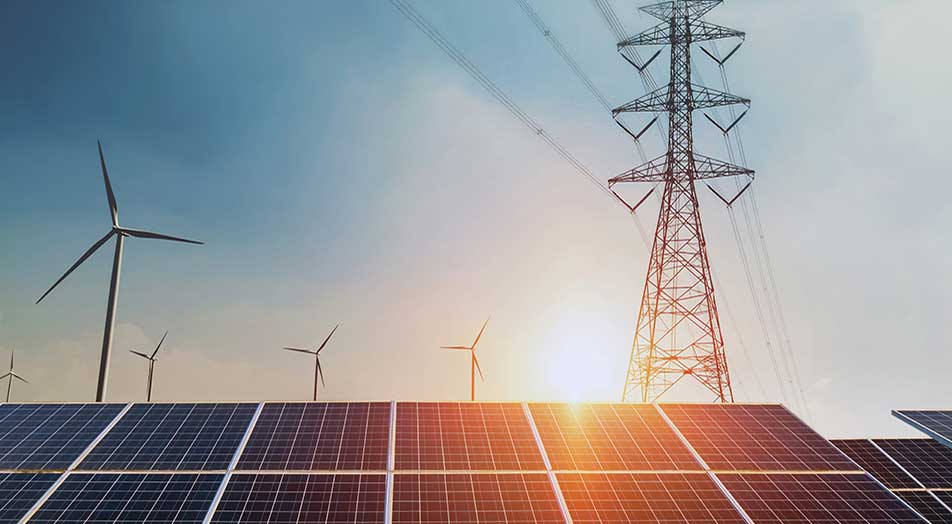As smart buildings and smart communities continue to evolve, the intersection of data-driven solutions and energy efficiency—known as intelligent efficiency (IE)—has become an area of innovation growth. However, questions about data availability and security could be barriers to widespread adoption if not addressed thoroughly.
Understanding Intelligent Efficiency
Intelligent efficiency (IE), which sits at the intersection of digitalization and energy efficiency, has emerged as an exciting area of growth favored by technological, policy, and economic trends. IE represents a portfolio of innovations within the larger set of data-driven solutions helping to stimulate the global energy transition. Making use of advancements in data, algorithms, networks, the cloud, and hardware, this type of digitalization has been at the core of new developments in energy service business model innovation, electricity grid operations, and renewable energy integration, among others.
IE is defined as the energy efficiency enabled by responsive, adaptive, and predictive capabilities of information and communications technologies. In addition to the technologies themselves, IE can incorporate data well beyond energy use. Building occupancy levels, indoor air quality readings, weather data, and user choices are just a few of the additional bits of information that can be used in systems to reduce energy requirements and costs.
Why is IE in buildings important? While some might overlook the role of buildings in climate change, buildings actually account for 36% of final energy consumption and 40% of carbon dioxide emissions globally. IE applied to the building sector represents a tremendous opportunity for persistent reduction in energy use and carbon dioxide emissions, while simultaneously decreasing costs and increasing control, comfort, and convenience.
The trends favoring massive increases in use of IE in buildings are multiple:
- There has been a move toward decarbonization policy efforts in the energy sector, such as the Paris Climate Agreement which sets targets for reducing CO2 emissions and California’s SB100, which mandates 100% emissions free energy for the state by December 31, 2045. Both require a substantial switch to clean sources of energy and substantially improved energy efficiency. Similar efforts are escalating at the local level.
- Decarbonization policy efforts in the building sector, such as the European Union’s Energy performance of buildings directive and California’s Low Carbon Buildings Bill (AB3232) are also expanding.
- Utilities are engaged in an ongoing search for cost-effective non-wires alternatives to infrastructure upgrades. These upgrades are increasingly needed to enable distributed energy resources and the anticipated uptake of electric vehicles (and their charging), in addition to maintaining an electricity grid which is reliable, safe, and cost effective.
- Energy efficiency represents at least a $16 billion industry, an estimate that actually under-represents to opportunity because it only includes formal frameworks such as utility energy efficiency programs, energy savings performance contracts, and property assessed clean energy programs.
- According to IDC, the smart home device market—including smart thermostats, appliances, and lighting—is estimated to grow at an annual rate of about 11% from 2018-2023 to $125 billion in the USA alone. Smart home devices are very often components within a suite of intelligent efficiency solutions.
- With advances in energy management and information systems, commercial buildings are also becoming smarter (a topic we will explore further).
Below are short explanations of two emerging opportunities at the intersection of energy efficiency and digitalization: (1) better information for the choice of energy efficient devices within a building and (2) better ongoing savings and controls for buildings.
Making More Informed Purchase Decisions
The average U.S. monthly electric bill for residential buildings in 2017 was about $112, or about $1,350 per year. Sources for electricity demand in a home are relatively diffuse, with air conditioning, space heating, and water heating making up nearly 50% of the total. Of course, one way to reduce this cost is by simply using less electricity (while still maintaining the level of service desired). This is where efficient appliances play a key role, especially those that are long-lived, such as hot water heaters, furnaces, air conditioners, and televisions (which range in useful life on average 10-20 years). One of the key barriers to any kind of energy efficiency intervention is information—typically, energy demand is not a salient feature at the point of purchase.
One successful company lowering this critical informational barrier is enervee, which uses data-driven choice engines. By combining multiple data streams such as manufacturers’ data, retail price, specific user electricity profile, location, and reviewers’ comments, the enervee platform is able to provide options that not only meet preferences for features and cost, but are also most efficient for the specific needs of the customer. This aggregation of disparate information within a platform to yield a meaningful outcome can result in consumers choosing rather than picking the best option for their needs.
Improving Ongoing Savings and Control
One of the key elements for building efficiency is understanding building systems. Typically, energy loads are modeled before a (commercial) building is built and occupied, based on presumed use patterns and equipment. Once the building is complete, a commissioning process may ensure that systems function according to specifications. Then, once the building is in use, building automation systems can provide building operators (as well as owners and occupants, if desired) with many thousands of points of data per day in an effort to check if heating, cooling, airflow, energy use (natural gas and electricity), costs, and other indicators are within set points. However, these systems typically lack the constellation of sensors and analytical capability needed to optimize building performance using high frequency (minute to hour) building data, as well as occupant pattern data, electricity meter data, plug load, and external data streams like weather data.
Advanced systems, such as energy management and information systems (EMIS) coupled with fault detection and diagnostic (FDD) capabilities, can reduce annual costs by an average of 7%, with savings persistence increasing over time. One company successfully moving forward in this space is KGS Buildings, using its Clockworks whole-building analytics platform. In one case study in a campus setting, Clockworks was able to deliver over $1 million in annual energy savings across a variety of buildings and equipment. One key point is that this was done simply by making the existing equipment function better as a system—there was no investment in new operating equipment. Advanced use of sensors, data streams, and analytics enabled the platform to wring out inefficiencies and deliver persistent savings in energy use and costs.
Much Promise, With Barriers to Overcome
The two examples provided show the increasing promise of delivering economical energy savings at scale through next-level energy efficiency. However, with respect to data, there are at least two major barriers that need to be addressed to enable widespread adoption of IE: 1) data access and standardization and 2) data security and privacy.
Timely and frictionless access to relevant, standardized data is critical to producing actionable insights via information management systems. Such data may include building-level energy use data; component/equipment level energy and performance data; aggregated customer data; utility system data, building occupant, and behavior data; and complementary data such as weather, traffic, or other community (outside the building) data. Policies can help create incentives for making data available (such as Proposition 39 in California) and an increasing number of municipalities are making useful data available as well. This is a growing field where building owners and operators, solution providers, utilities, community planners, and developers all have a significant stake and where the innovation in technology will be critical.
Data security and privacy of data used to enable IE is of vital importance. With the explosion of smart connected devices, there are now millions of new points of entry into a building information system, whether it is within a large commercial building or an individual home. Security threats and lapses have been well documented. Progress is being made to determine what constitutes a secure device and system while still being cost effective. At the same time, privacy concerns abound, given the ability to potentially identify individuals or infer their actions through connected devices and systems. Policies such as the European Union’s General Data Protection Regulation (GDPR) and the 2018 California Consumer Privacy Act help steer development of components and systems built upon the concepts of accountability. However it will take concerted efforts by solutions providers and regulators alike to imbue customers with a sense of trustworthiness in terms of data security and privacy.
This is the first of a series of articles on the intersection of digitalization and energy efficiency.



